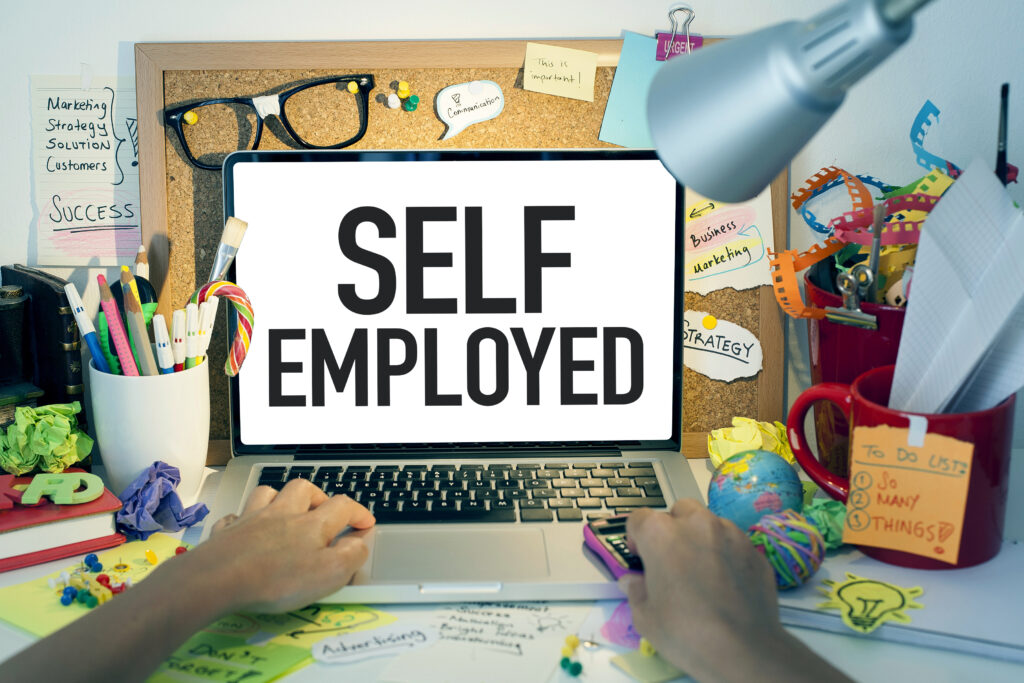Are you tired of the conventional 9-to-5 grind? Have you ever dreamt of being your boss, setting your schedule, and defining your career path? If so, self-employment might be the perfect avenue for you. In this comprehensive guide, we’ll delve into the steps to becoming self-employed, explore various career options, and unveil the myriad benefits of this liberating choice.
How to be self-employed
1. Discover Your Passion
The initial step towards self-employment involves exploring diverse career options. It’s an opportune moment to reflect on your passions and consider a profession that resonates with your interests. Self-employed professionals relish greater flexibility in managing their time and responsibilities, making it an ideal platform to craft your dream career. Begin by jotting down your interests, skills, and experiences to pinpoint potential career avenues. For instance, if your heart lies in photography, venturing into freelance photography could be fulfilling.
2. Specialize Your Skills
After choosing a career field, delve into a specialization that sets you apart. Contemplate your unique services or products, identifying your potential clientele and the problems you aim to solve. Specializing allows for a more detailed business plan, enhancing your chances of success. Continuing with the photography example, you might narrow your focus to wedding photography or professional headshots, catering to a more specific audience.
3. Navigate Your Market
Before taking the plunge into self-employment, thoroughly analyse your market. Research competitors, compile a list of similar service providers, and discern their offerings, prices, advertising strategies, and target audiences. This survey enables you to align your business plan with market demands. For a budding freelance writer, scrutinizing competitors in the writing niche can provide insights for launching a successful freelance career.
4. Establish SMART Goals
Leverage your market insights to formulate short-term and long-term goals using the SMART criteria: Specific, Measurable, Achievable, Relevant, and Time-based. This ensures your goals are detailed, realistic, and come with deadlines. Tracking your progress against these goals facilitates continuous improvement. For instance, setting a goal to acquire 15 new clients in the first quarter allows for precise evaluation and subsequent adjustments to your marketing strategy.
5. Craft a Strategic Business Plan
Utilize your goals as building blocks for a comprehensive business plan. Identify actionable steps to achieve your goals, whether it involves expanding your audience through innovative marketing strategies or utilizing advertisements. Consider the tools and strategies essential for your business success. For an aspiring independent videographer, this might entail acquiring or renting video equipment and planning for initial expenses.
6. Pave the Way with a Transition Plan
After finalizing your business plan, create a transition plan if transitioning from a traditional role. Adhering to your employer’s notice policies ensures a smooth departure. Many professionals initially opt for part-time self-employment, cultivating their skills while maintaining job security. For instance, a prospective freelance web developer could offer services outside regular work hours to gradually transition into a full-time freelance role.
7. Tackle Administrative Tasks
Initiate the administrative aspects of self-employment, such as choosing a business name, creating a website, or establishing a social media presence. Freelancers should consider curating a portfolio showcasing their skills and services, acting as a virtual resume.
8. Enlist with the Business Registration Service
Before launching your venture, register with the Business Registration Service to secure an Australian Business Number (ABN). This number facilitates tax filing and invoicing for self-employed professionals. Registration can be completed online, catering to freelancers, contractors, and sole traders.
9. Unleash Your Business into the World
Armed with your ABN, embark on your self-employed journey. You can work remotely or rent an office space, depending on your services. Engage in strategic marketing to expand your business and attract clients.
Self-Employed Career Paths
If the allure of self-employment beckons, various career paths await your exploration. Here are some common self-employed avenues with sample job titles:
Freelancer
A freelancer offering services contract-free enjoys maximum flexibility in pay, responsibilities, and deadlines. This path accommodates part-time or side job beginnings, allowing for remote work. Examples include:
- Journalist
- Copywriter
- Copyeditor
- Photographer
- Videographer
- Graphic designer
- Web designer
- Web developer
- Accountant
- Virtual Assistant
- Real estate agent
Independent Contractor
Like freelancers, independent contractors operate on a contract basis, often working on specific projects. They offer specialized services and include roles like:
- Construction contractor
- Carpenter
- Driver
- Brand Ambassador
- Hairstylist
- Plumber
- Electrician
- Painter
- Mason
- Event planner
- Consultant
Sole Proprietorship
Individuals own and operate their businesses as a sole proprietor or sole trader. This structure allows for flexibility, catering to various industries and services.
